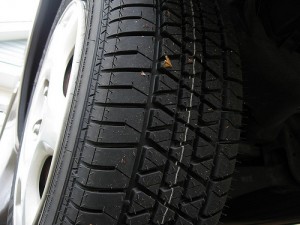
Photo by photoartist3
(This is a guest post from my husband, Tony, an amateur chef who cooks professional-quality dishes. As the primary beneficiary of his culinary talents, I can absolutely attest to his abilities in the kitchen. Here are his recommendations for the only 12 tools you need to make pretty much anything without cramming your cupboards or breaking the bank.)
Stocking a frugal kitchen is a balancing act. Weighing the pros and cons of a particular tool and trying to figure out how much money you should put down for it is as delicate an art as cooking or baking. Depending on the situation, money either is or is not synonymous with quality, which is why the only rule you should ever have when buying a kitchen tool is this: is it a multi-tasker?
I don’t want to suggest a kitchen can survive with just 12 pieces. But these strategically purchased pieces can help cut down on the clutter coming in and the dollars going out.
12.) A 10- or 12-inch nonstick pan. I would never pay more for a non-stick pan than I would want to pay again in the next few years. Unfortunately, it doesn’t matter if you buy the cheapest non-stick pan or the most expensive non-stick pan: both are susceptible to that single nick that will cause them to lose their functionality. Although keeping a non-stick pan in pristine condition for multiple years is certainly not impossible, most of us don’t store it in a museum display case and will have an accident that will begin to ruin the pan. Look for a pan in the low-middle cost range; something that has a little heft to it (to hold heat and allow for even cooking, which the cheapest ones don’t) but won’t make your bank account cry if you chip it.
11.) A thick rubber-handled manual can opener. Cheaper than an electric variety, easier to clean, and if the handle is rubber, it can moonlight as a jar opener.
10.) A large pot, 8 to 12 quarts. Perfect for soups, stews, and stocks. (Every frugal kitchen should be making its own stocks!)
9.) In most cases, buy plastic instead of metal. It’s cheaper and it lasts longer. Metal, particularly stainless steel, looks beautiful — but cheap metal measuring cups can bend at the handle, and cheap metal measuring spoons can rust. My mother still uses the same simple plastic measuring devices she received at her wedding. And if you’re looking into plastic utensils (particularly flexible-head spoon spatulas), it’s worth the extra dollar or two to buy something that is safe to high temperatures; melted plastic is never a tasty ingredient.
8.) Tongs. They’re like a third hand. If you can only buy one, get the ones with heat-resistant plastic on the ends so they won’t ruin your non-stick cookware.
Tony is my husband, an excellent cook, a grad student, and a movie reviewer. Check back tomorrow for the second installment of his guide to essential tools for the frugal kitchen!
 It was less than a year ago that I was frustrated with our
It was less than a year ago that I was frustrated with our  This weekend, my parents are coming to visit. I haven’t seen them since Christmas, and I can’t wait.
This weekend, my parents are coming to visit. I haven’t seen them since Christmas, and I can’t wait.